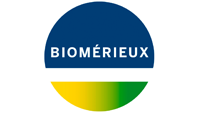bioMérieux launches at ASM Microbe 2016: www.antimicrobial-resistance.biomerieux.com, its new website dedicated to Antimicrobial Resistance
16 June, 2016bioMérieux, a world leader in the field of in vitro diagnostics, is proud to announce the launch, on the occasion of the ASM Microbe 2016 (June 16-20, Boston), of its dedicated educational website on antimicrobial resistance.
Marcy l’Etoile (France), June 16, 2016 - bioMérieux, a world leader in the field of in vitro diagnostics, is proud to announce the launch, on the occasion of the ASM Microbe 2016 (June 16-20, Boston), of its dedicated educational website on antimicrobial resistance.
www.antimicrobial-resistance.biomerieux.com is a new accessible, interactive and educational website dedicated to antimicrobial resistance, one of today’s major threats to human and animal health. Some estimates show that every 4 minutes, a person dies from an infection caused by bacteria which have become resistant to antibiotics[1].
Education and raising awareness are the main objectives of this new website, which reaffirms bioMérieux’s longstanding commitment to antibiotic resistance and antibiotic stewardship, and aims at emphasizing the medical value of diagnostics to fight against antibiotic resistance.
“Building on more than 50 years of commitment to serving global public health and on our leadership position in microbiology, we are very proud to launch this educational website and raise awareness of a wide audience on this increasingly global concern. Indeed, everyone has a role to play to curb antimicrobial resistance now and for the future”, says Mark Miller, bioMérieux’s Chief Medical Officer.
The website is written in a way to address multiple audiences, from scientists to healthcare providers and to the lay public, and its contents will be regularly and frequently updated as new developments on antimicrobial resistance occur.
[1] Combined data coming from studies led in the EU, USA and in India among children (Centers for Disease Control and Prevention, WHO, Laxminarayan and al. in The Lancet)

